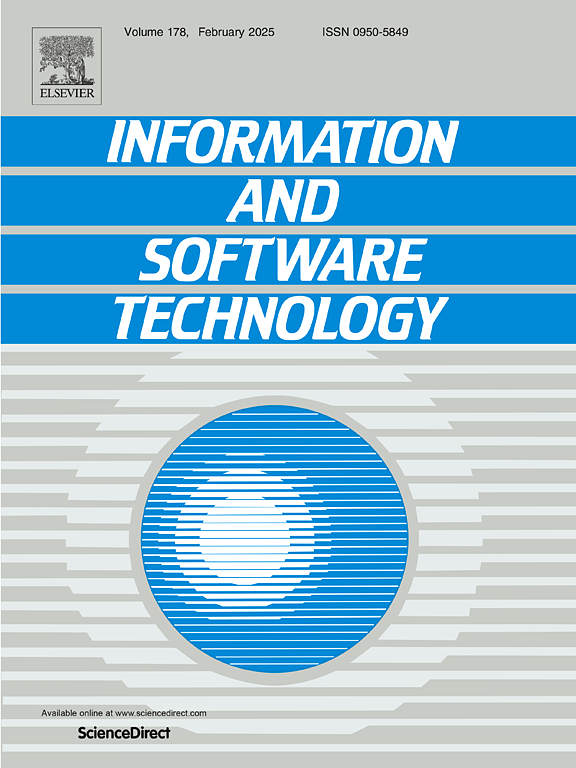Locating requirements in backlog items: Content analysis and experiments with large language models
IF 3.8
2区 计算机科学
Q2 COMPUTER SCIENCE, INFORMATION SYSTEMS
引用次数: 0
Abstract
Context:
As agile development has become mainstream, requirements are increasingly managed via issue tracking systems (ITSs). These systems provide a single point of access to the product and sprint backlogs, bugs, ideas, and tasks for the development team. ITSs do not clearly separate requirements from work items.
Objective:
We first tackle a knowledge problem concerning how requirements are formulated in ITSs, including their categorization and granularity, the presence of multiple requirements, and the existence of a motivation. Second, to assist practitioners in finding requirements in poorly organized ITSs without changing their way of working, we investigate the potential of automated techniques for identifying and classifying requirements in backlog items.
Method:
Through quantitative content analysis, we analyze 1,636 product backlog items sampled from fourteen projects. To explore automated techniques for identifying requirements, we experiment with large language models (LLMs) due to their recent significance in NLP.
Results:
The labeling of backlog items is largely inconsistent, and user-oriented functional requirements are the prevalent category. A backlog item often contains multiple requirements with different levels of granularity. The experiments with LLMs reveal that encoder-only models (BERT and RoBERTa) are most suitable for extracting and classifying requirements in backlog items compared to decoder-only models (Llama 3, Mistral 7B and ChatGPT with GPT 4).
Conclusion:
We reveal knowledge and patterns about requirements documentation in ITSs, leading to a better empirical understanding of Agile RE. The experimental results with LLMs provide the foundation for developing automated, unobtrusive tools that identify and classify requirements in ITSs.
求助全文
约1分钟内获得全文
求助全文
来源期刊

Information and Software Technology
工程技术-计算机:软件工程
CiteScore
9.10
自引率
7.70%
发文量
164
审稿时长
9.6 weeks
期刊介绍:
Information and Software Technology is the international archival journal focusing on research and experience that contributes to the improvement of software development practices. The journal''s scope includes methods and techniques to better engineer software and manage its development. Articles submitted for review should have a clear component of software engineering or address ways to improve the engineering and management of software development. Areas covered by the journal include:
• Software management, quality and metrics,
• Software processes,
• Software architecture, modelling, specification, design and programming
• Functional and non-functional software requirements
• Software testing and verification & validation
• Empirical studies of all aspects of engineering and managing software development
Short Communications is a new section dedicated to short papers addressing new ideas, controversial opinions, "Negative" results and much more. Read the Guide for authors for more information.
The journal encourages and welcomes submissions of systematic literature studies (reviews and maps) within the scope of the journal. Information and Software Technology is the premiere outlet for systematic literature studies in software engineering.
 求助内容:
求助内容: 应助结果提醒方式:
应助结果提醒方式:


